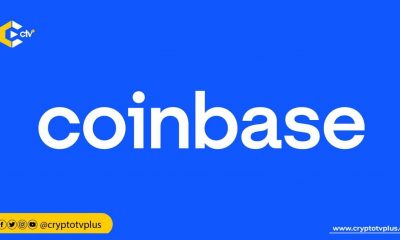News
Tokenized U.S. Treasuries surge 1,000% in a year – Coinbase

- Tokenized U.S. Treasuries surged 1,000% to $1.29 billion (Jan 2023 – May 2024) due to high rates and blockchain.
- The tokenized asset market could hit $16 trillion by 2030, driven by stablecoins and tangible assets.
- Non-stablecoin tokenized assets grew over 100%, exceeding $3 billion since 2023, led by government securities.
Blockchain technology has sped up the worldwide trend of tokenization, fueled by the rising appetite for tokenized assets. According to a recent report by Coinbae, high interest rates have significantly increased the demand for safe, high-yielding Treasury bills on-chain in the U.S.
This surge has led to the value of tokenized U.S. Treasury products rising by over 1,000%, reaching $1.29 billion from January 2023 to May 31, 2024.
Asset tokenization involves translating the ownership of an asset into a digital token, which can be stored, traded and exchanged on a blockchain platform. These tokens signify a stake in the original asset. The token is a derivative of an asset and draws its originality from that asset.
According to the report, the market for tokenized assets is predicted to soar to $16 trillion by 2030, equaling the present GDP of the European Union. Stablecoins primarily fuel this explosive growth, though tokenizing tangible assets is also accelerating.
Tokenization of real-world assets (RWAs) is the process of representing physical and traditional financial assets, such as cash, commodities, equities, bonds, credit, artwork, and intellectual property, as digital tokens on a blockchain.
This allows for a digital representation of the underlying asset, enabling on-chain management of ownership rights and improving liquidity, access, and transparency compared to traditional assets.
Surge in non-stablecoin Tokenized Assets
Coinbase reported that the market value of non-stablecoin tokenized assets has surpassed $3 billion, marking a growth of over 100% compared to 2023. This total primarily includes publicly trackable assets.
Furthermore, the Hong Kong Monetary Authority estimates an additional $3.9 billion in tokenized bonds, highlighting the global expansion and demand for tokenized assets.
Delving deeper, Coinbase observed that government securities are leading this trend. “Before tokenized Treasury bills, interest focused on commodities,” it stated.
Although the tokenized value of commodities “has been overshadowed by surging government securities, more users on-chain have held commodity-based tokenized assets than any other tokenized asset type (beyond stablecoins).”
Top financial firms in the U.S. have driven the development of government securities to take advantage of the surge in demand. For example, in 2019, Franklin Templeton launched its U.S. Treasury money market fund, FOBXX. It was designed to give investors access to government money markets through blockchain.
Franklin Templeton improved investor access to blockchain-based offerings through this infrastructure, making issuing and trading ownership on public blockchains easier. The financial firm initially deployed FOBXX on the Stellar blockchain and later expanded to the Polygon network.
FOBXX surpassed $270 million in assets under management (AUM) as of March 31, 2021. However, as of March 31, 2024, the Fund held over $360 million in AUM.
BlackRock also launched its tokenized fund, the BlackRock USD Institutional Digital Liquidity Fund (BUIDL), on the Ethereum network on March 20, 2024.
The project, launched in partnership with digital asset securities firm Securitize, offers investors the opportunity to earn U.S. Treasury yields. It currently sits on a market cap of over $400 million.
Expansion of tokenized loans
Another aspect of the tokenized asset class that has seen a positive push is the tokenized loan market. Tokenized loans refer to converting traditional loans into digital tokens that can be traded on blockchain platforms.
This allows for the creating of a new asset class, enabling lenders and borrowers to access a broader range of financial instruments and services.
The market has remarkably increased, from nearly zero in October 2020 to over $400 million by April 2024.
This market now includes a variety of loan types, such as trade financing, revenue-based financing, and real estate financing. This suggests that tokenized lending is expanding to include more borrowers and purposes.
In general, tokenization is fundamentally changing the landscape of investment opportunities by broadening the range of asset classes accessible to global investors.
Traditionally, investments were largely confined to tangible assets like Gold and Silver. However, with tokenization, investors can now access assets such as blockchain-based treasuries designed to operate on decentralized platforms.
This innovation extends beyond mere asset class diversification; it also facilitates new business models that transcend traditional market constraints.
Unlike traditional markets, which have barriers like geographical distance and high capital requirements, tokenization enables more inclusive and accessible investment opportunities.

























Pingback: Tokenized U.S. Treasuries surge 1,000% in a year - Coinbase | CryptoTvplus - newsgala.com